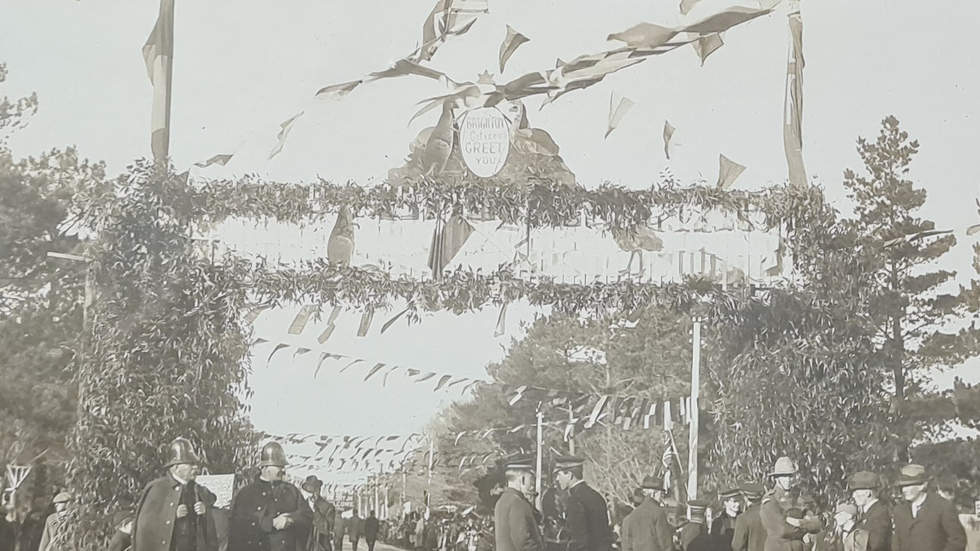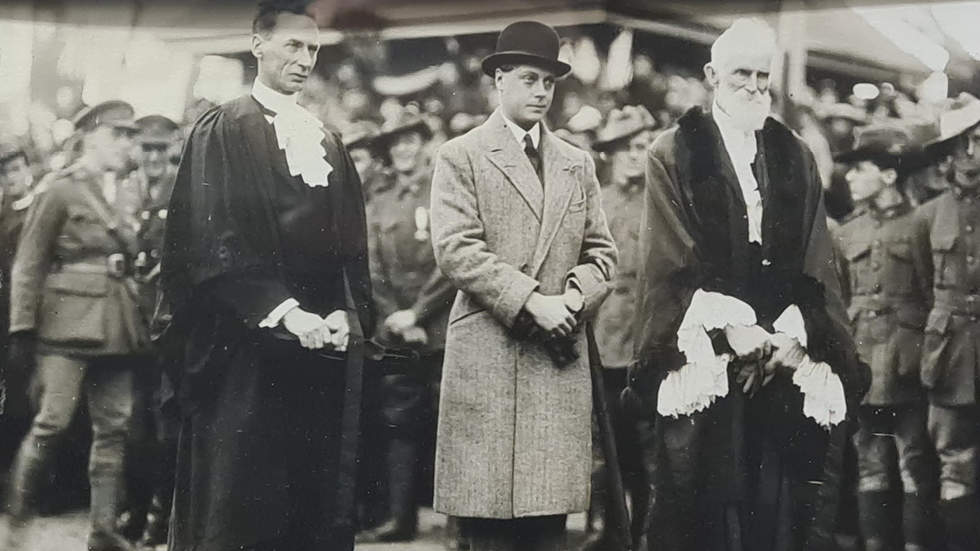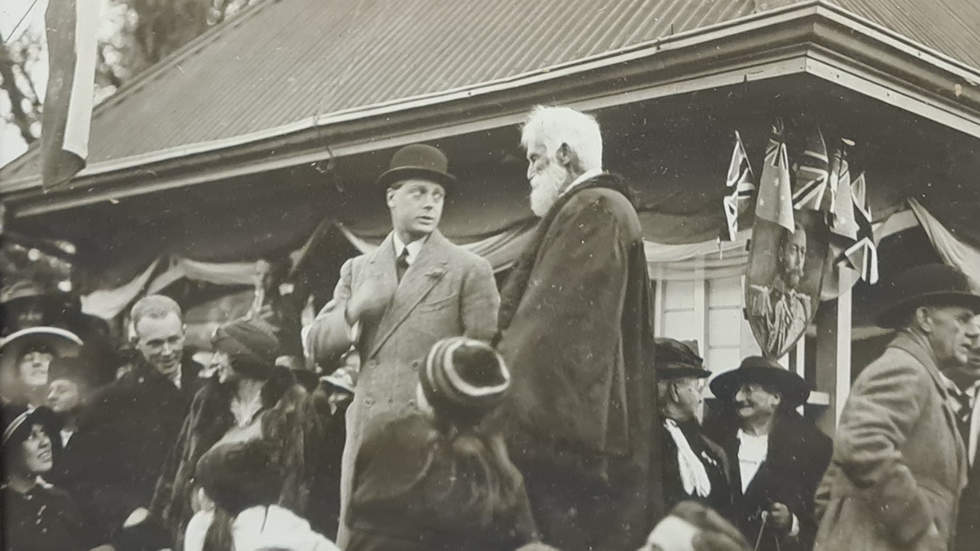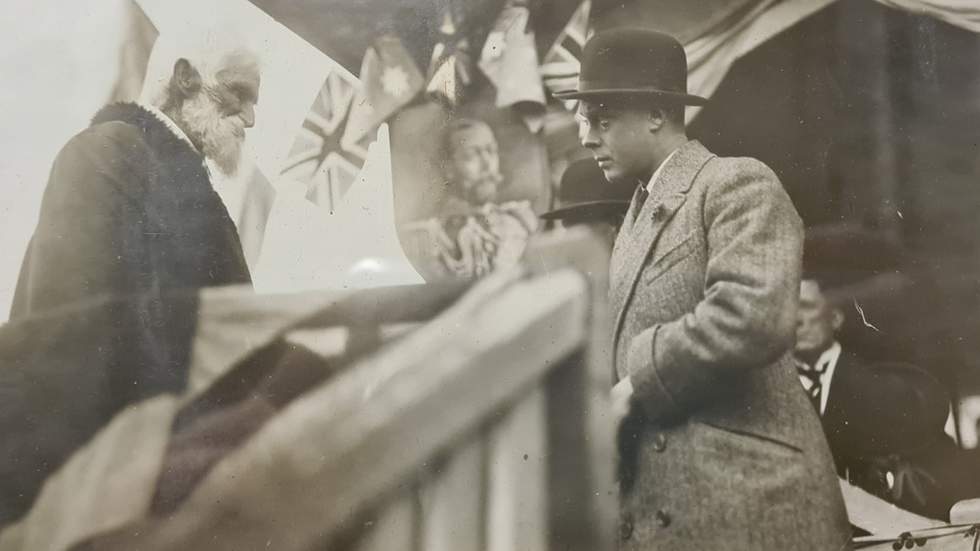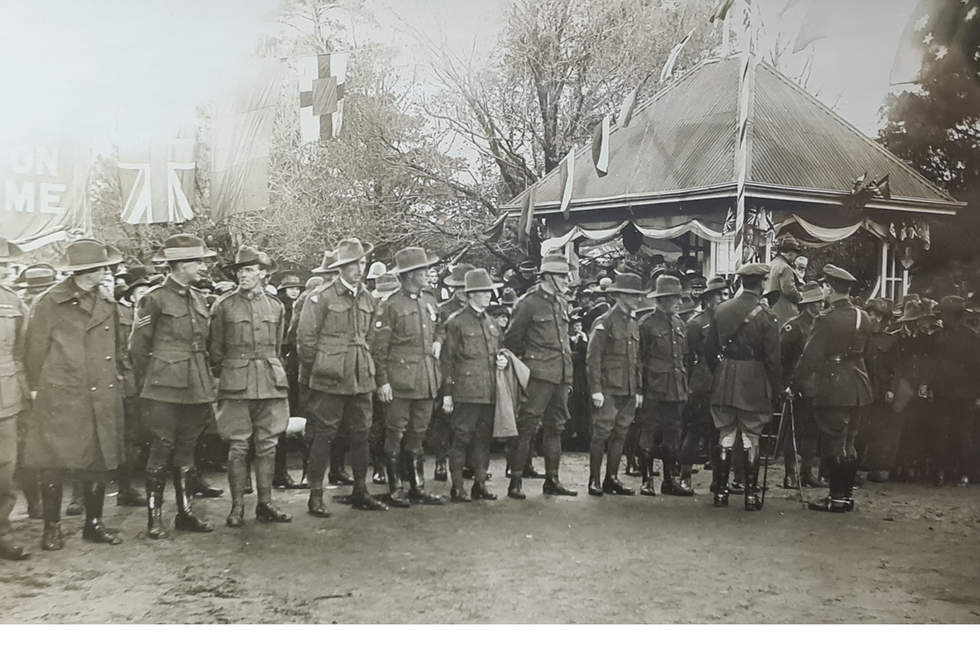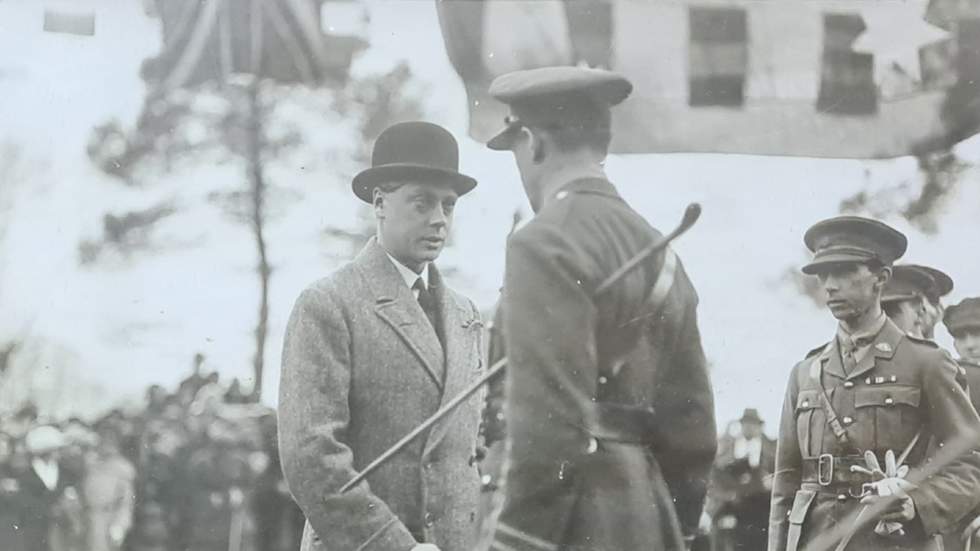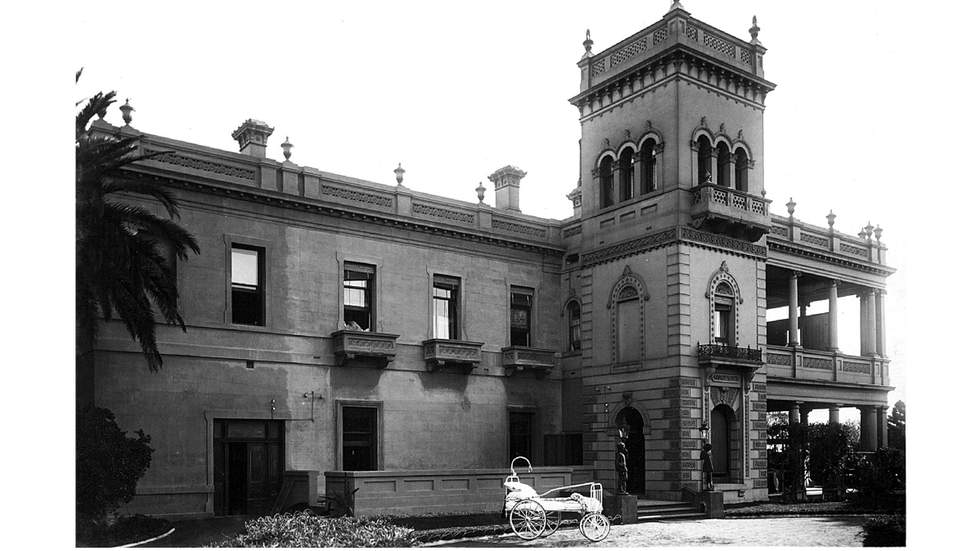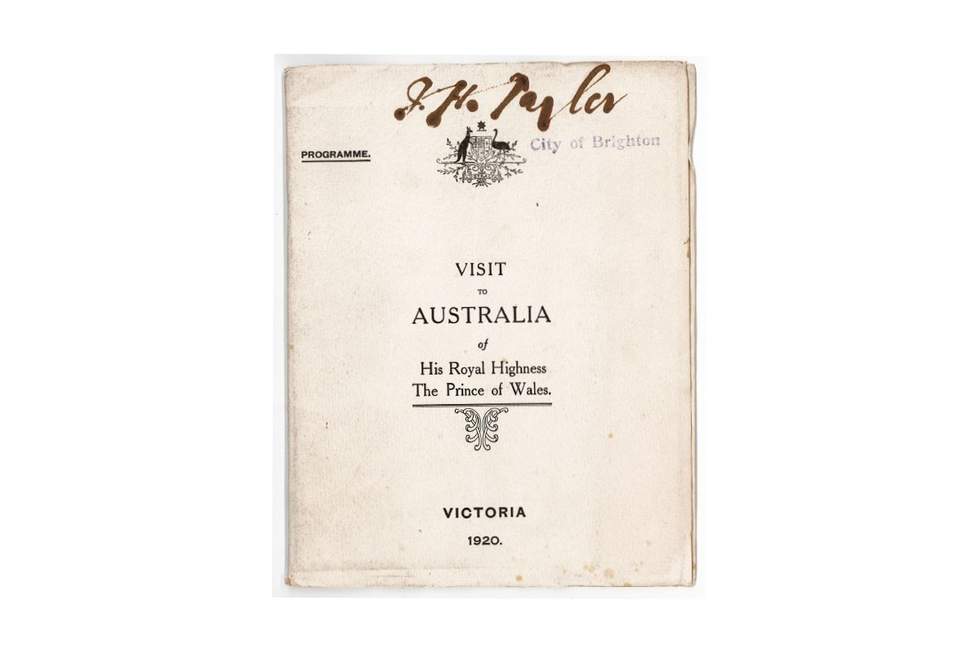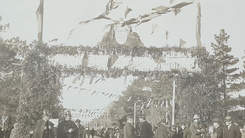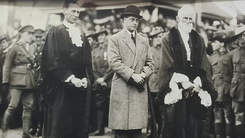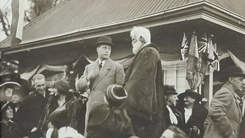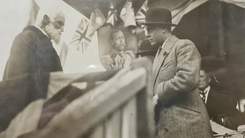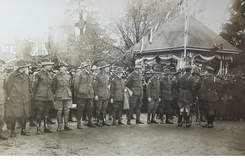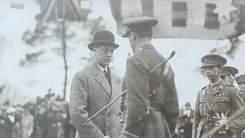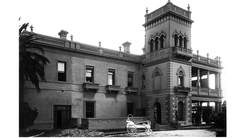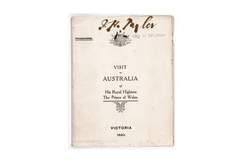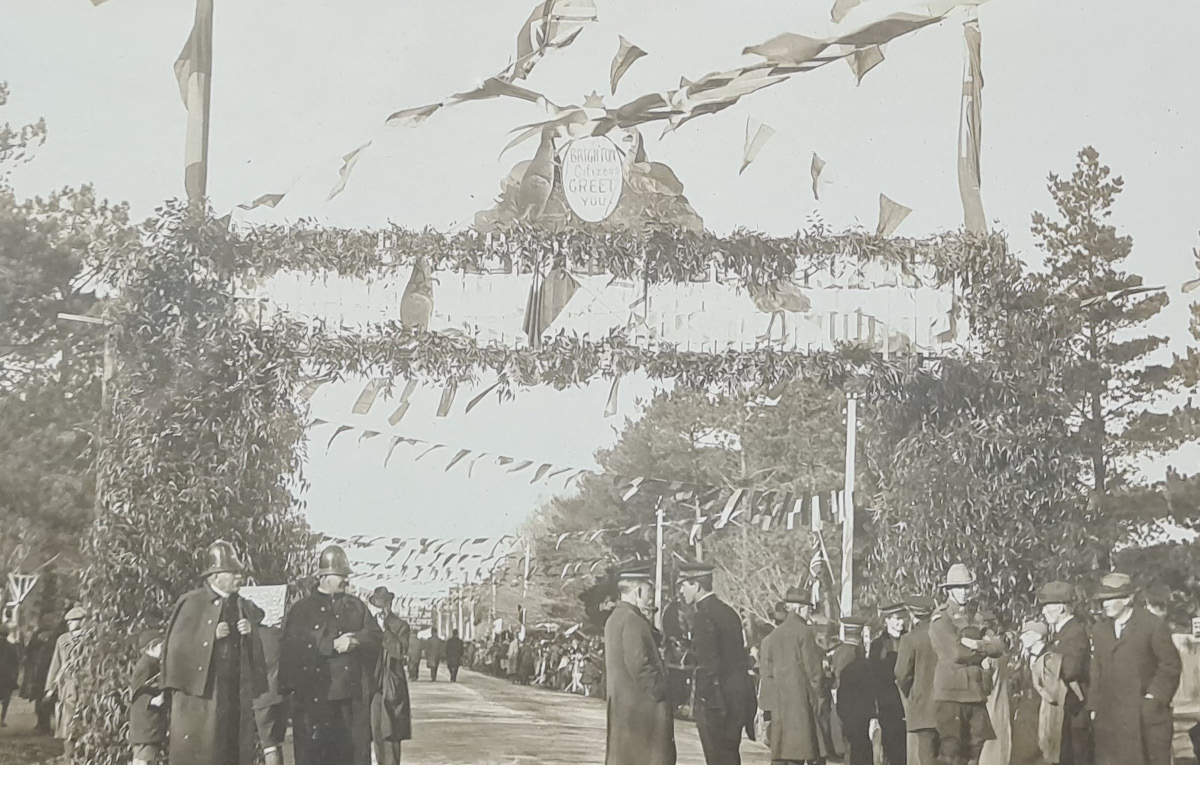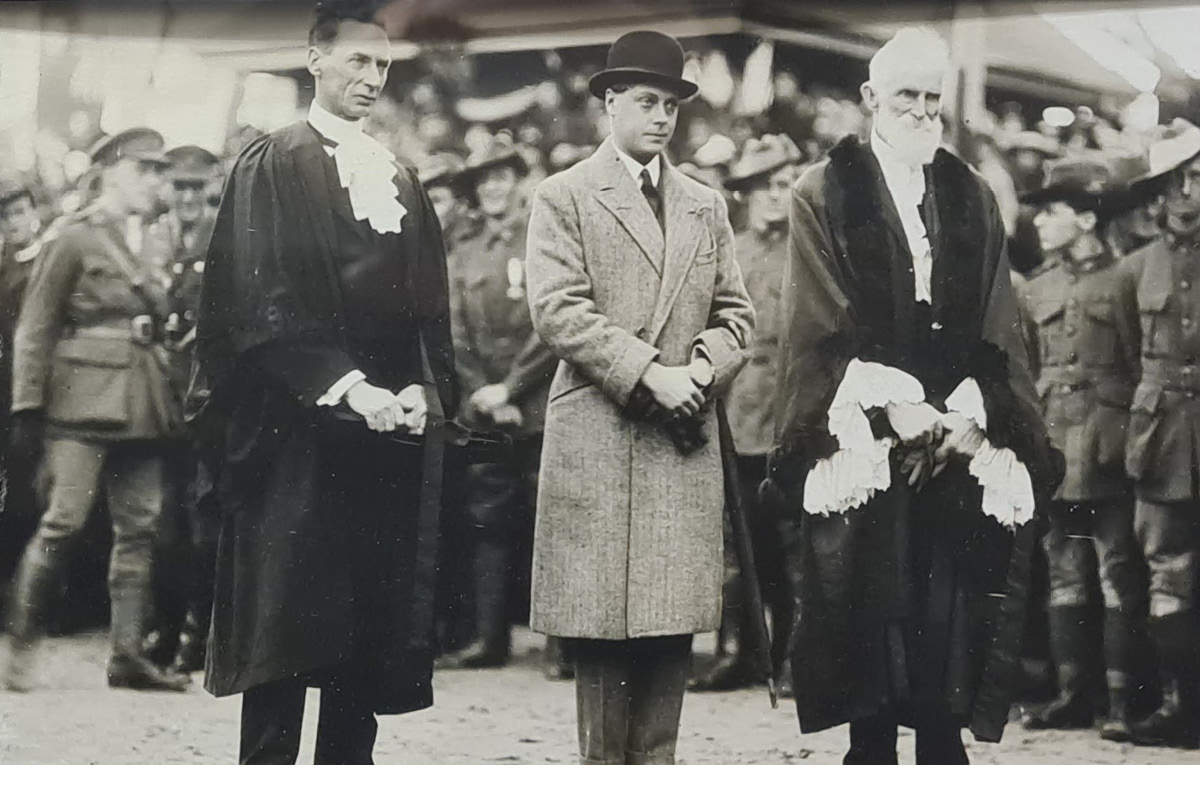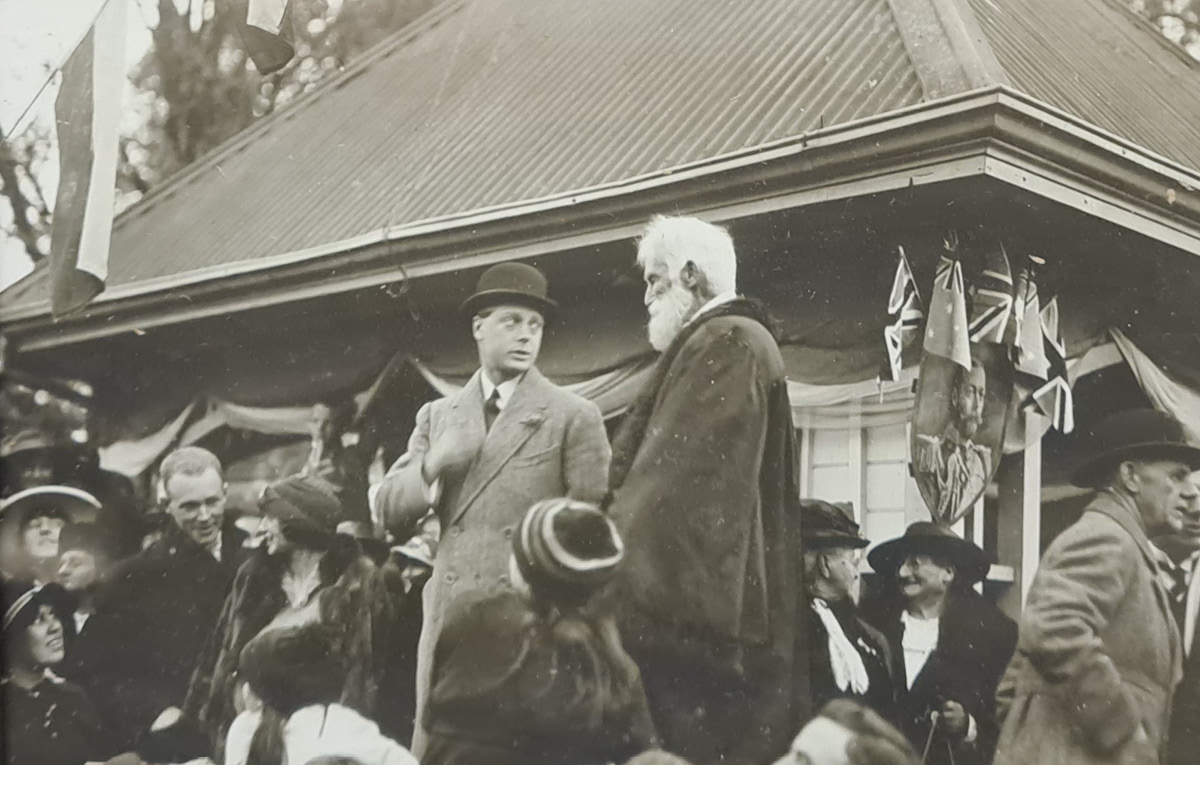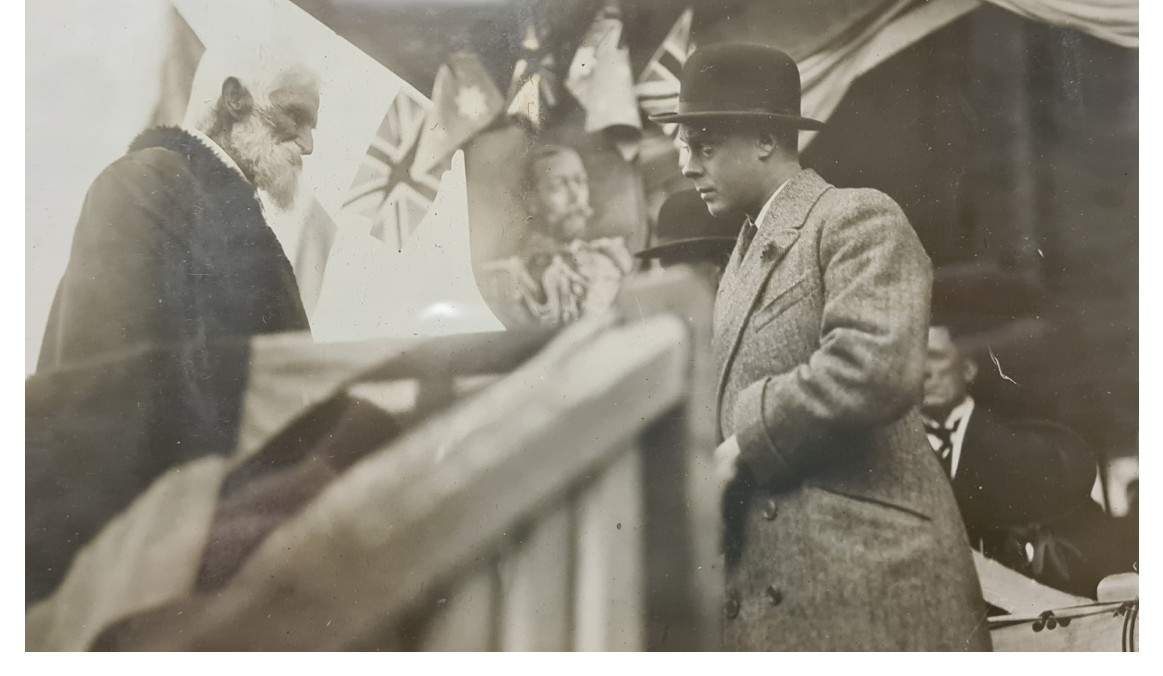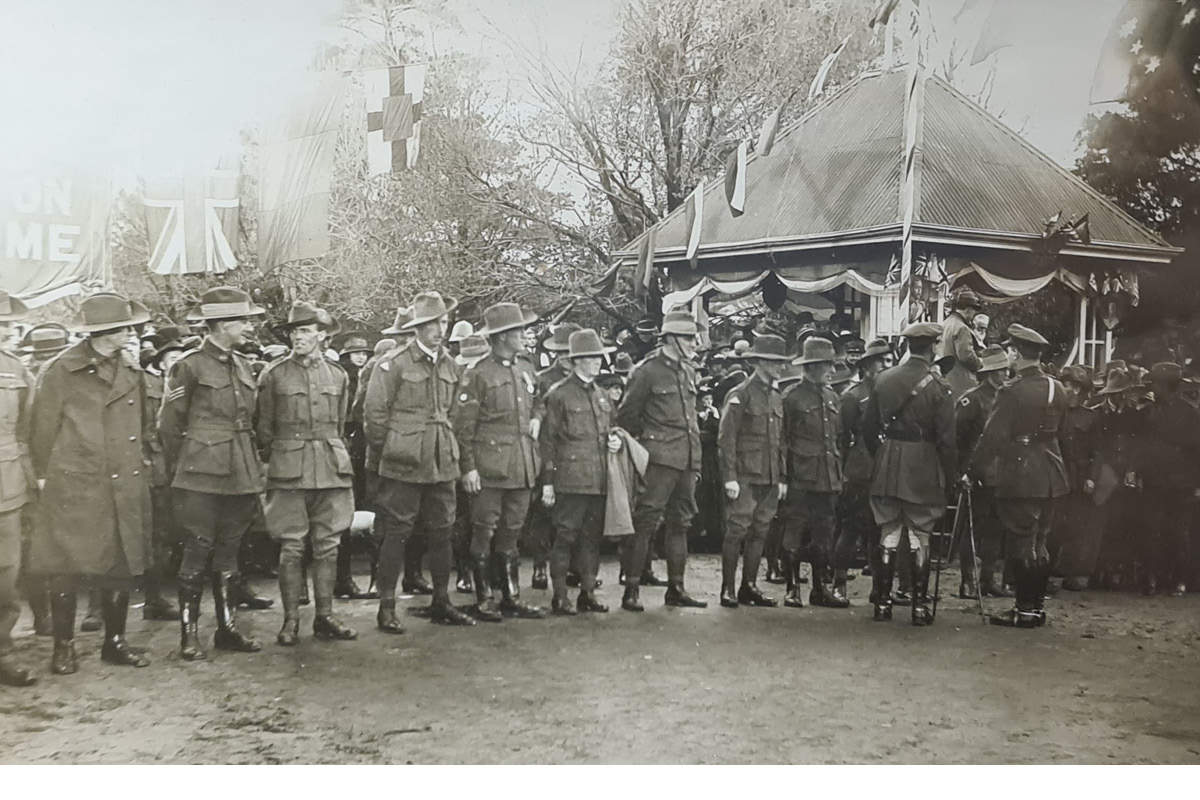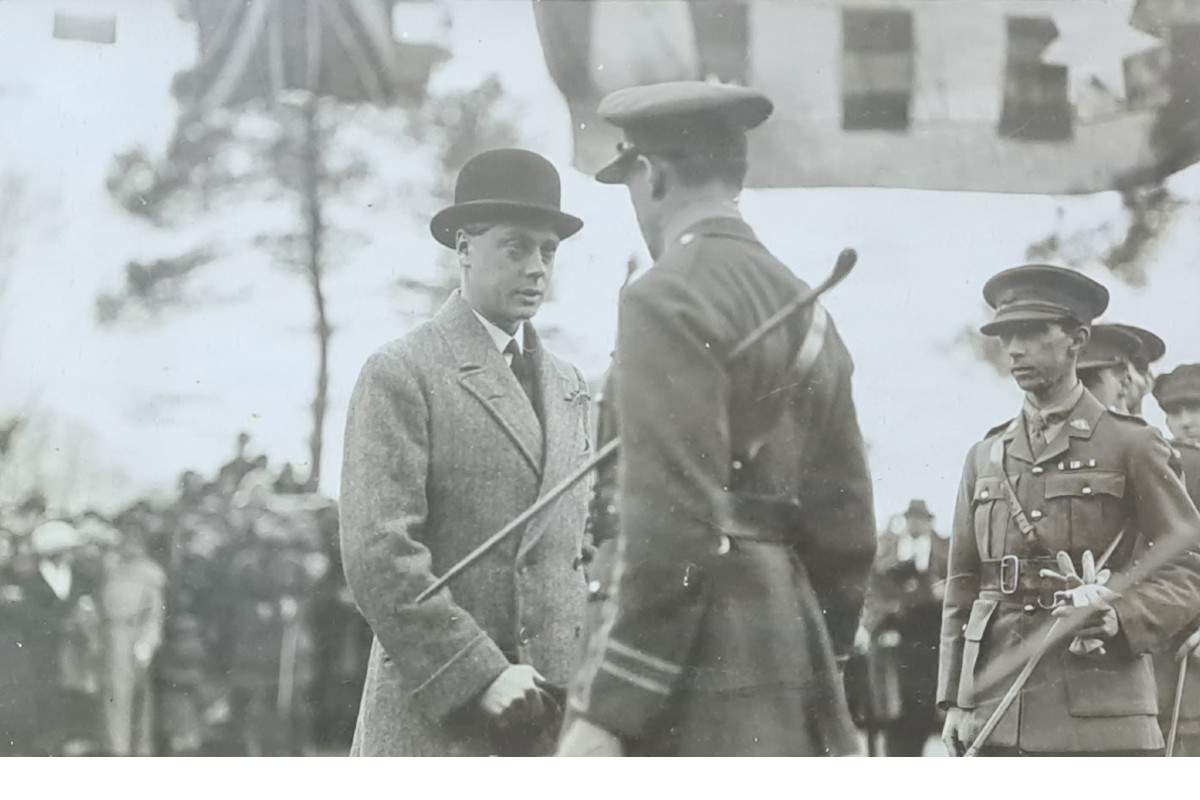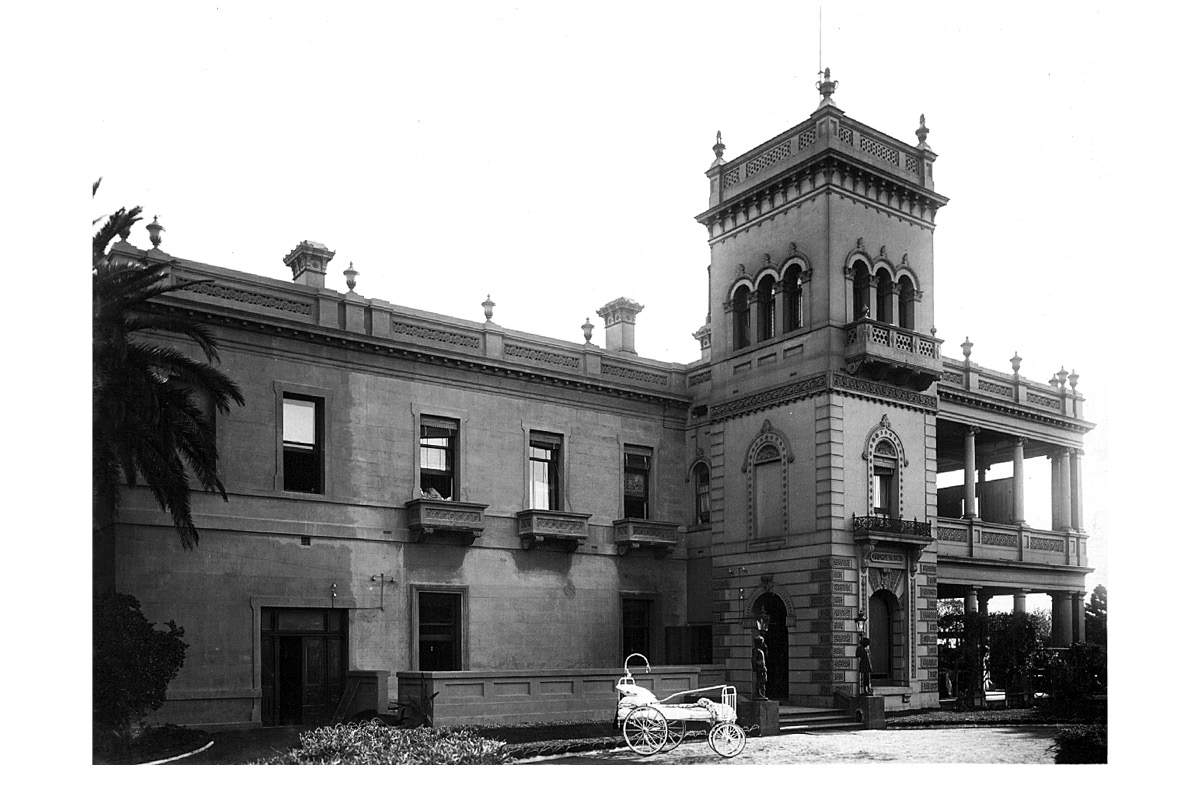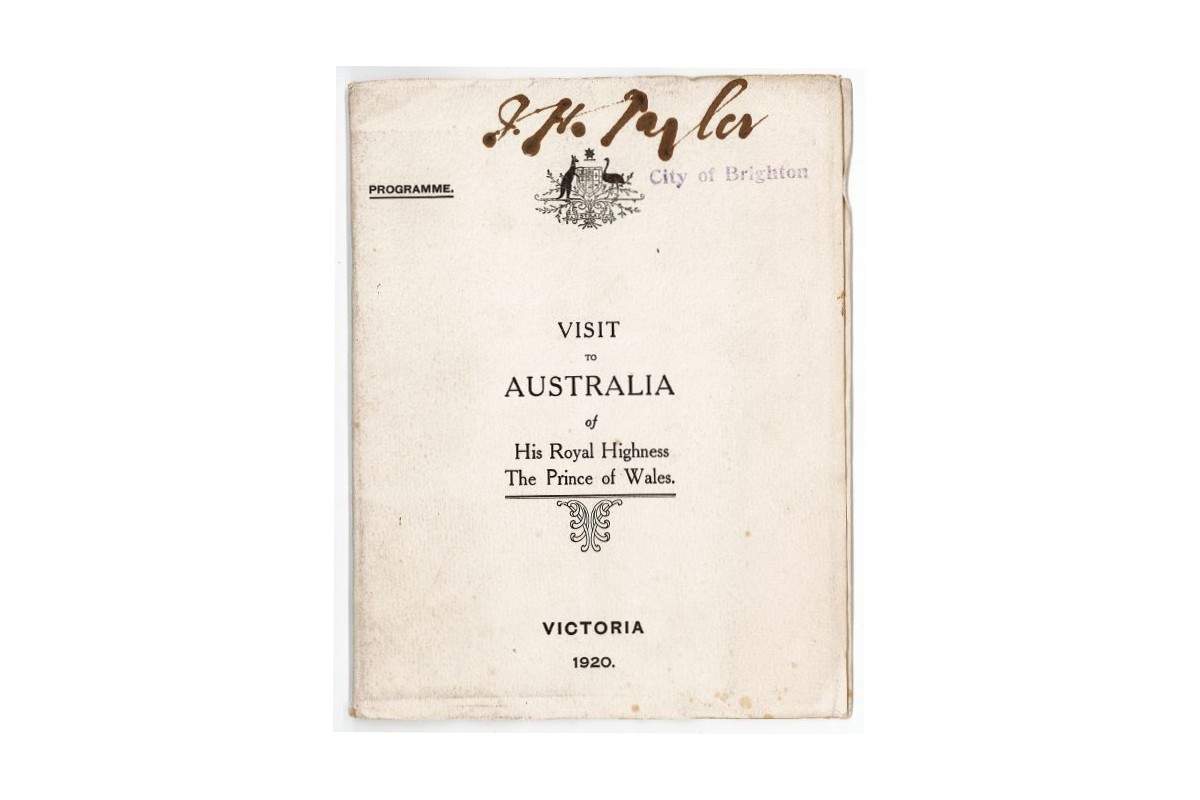Spotlight on the Collection: The Royal Visit
100 years ago on 5 June 1920, His Royal Highness, The Prince of Wales paid a visit to ANZAC Hostel in Brighton to thank the wounded soldiers for their war efforts. Please enjoy exploring some of the records of the visit below.
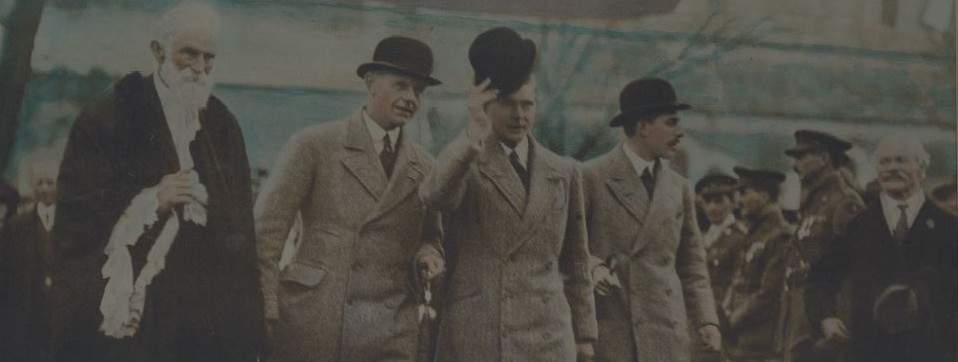
Mayor of Brighton Cr Thomas Wilson on left with Prince of Wales (with hat raised) during his visit to ANZAC Hostel in Brighton 1920 (detail), hand-tinted photograph. Bayside City Council Art and Heritage Collection
These images appear larger in the gallery box
The Royal Visit
In 1920, the Prince of Wales embarked on a journey to Australia on behalf of his father, King George V. While the visit was intended to strengthen the relationship between Australia and the Empire, the main objective was to offer thanks to the Australian men and women for the sacrifices and contributions that they had made during World War I. The Royal Tour began in April 1920 and covered 110 cities and towns across the country. The Prince spent eleven days in New South Wales, nine days in Victoria, four days in Tasmania, eleven days in Western Australia, six days in South Australia and eight days in Queensland.
The Prince's visit was a resounding success, with crowds of thousands lining the streets and railway lines for hours to get a glimpse of him. Each place he visited declared public holidays in his honour, foundation stones were laid down, memorials were unveiled and countless receptions and balls were held. The Prince, who had himself served in the First World War and been awarded the Military Cross in 1916, showed a great concern for the repatriation of soldiers, particularly the wounded. During his visit he even earned himself the nickname the 'Digger Prince' - a great compliment at the time from a country who held its returned service men and women in such high regard.
On Saturday 5 June 1920, following a morning at the races in Flemington, the Prince spent the afternoon at ANZAC Hostel in Brighton, where he chatted to wounded soldiers and, according to the newspaper reports at the time, "won the hearts of all present."[1] The Mayor, Cr Thomas Wilson, made a welcoming speech to the Prince which was met by great applause by the cheering crowd, "We tender our warmest thanks for your kind consideration in coming to visit the inmates of the ANZAC Hostel. They are men who have suffered much, and are now suffering - men who have fought and bled for their King and country; whose loyal, heroic and manly deeds, coupled with others of kindred spirit, have made the name of Australia known throughout the world and a visit from their soldier Prince will be very much appreciated."
ANZAC Hostel, Brighton
In 1918 Kamesburgh, the large 19th century Italianate mansion located on North Road in Brighton, made way for a new kind of residence, a repatriation home for the rehabilitation of invalid soldiers. The First World War had come to a close and a newly formed Repatriation Department had begun researching suitable houses to accommodate incapacitated ex-servicemen returning from war. Kamesburgh, had been earmarked as one of several suitable properties for conversion to the Melbourne ANZAC Hostel, an expensive task that would have been near impossible without The Baillieu Gift, a £25,000 donation and the single largest gift to the Repatriation Department.
After Kamesburgh had been purchased, a series of alterations were made. These included the addition of a storey over the service area at the rear of the building to be used as nurses quarters, the inclusion of a lift capable of taking a bed, the doubling of any doors to rooms where beds were required to be moved in or out and the ramping of stairs between the main hall and the dining room. The addition of small details such as wheels and pulleys on baths, beds and meal trolleys ensured that the house was comfortable and functional for its new inhabitants. The hostel was opened on Saturday 6 July 1919 by Sir Arthur Stanley, Governor of Victoria.
The purchasing and conversion of such a grand house as Kamesburgh, and the nature of the Baillieu Gift provide an indicator of public sentiment following the First World War. The post-war community fully supported the provision of every comfort for those who had been left permanently incapacitated. The honour of a Royal Visit by the Prince of Wales in 1920 and again in 1927 by the Duke and Duchess of York further cemented ANZAC Hostel as a site of significant public importance.
It has been many years since the last patient left ANZAC Hostel, and the grounds are now occupied by a school, Star of the Sea College.
_______________________________________________________________________________
[1] "The Prince in Melbourne", The Argus, Monday 7 June 1920, page 7
Interested in learning more about the Art and Heritage Collection?
Bayside City Council is the custodian of the Bayside Art and Heritage Collection, a collection of around 2,000 items that was principally formed when the former Sandringham and Brighton City Councils merged in 1994. Artworks and heritage objects are displayed at our Corporate Centre in Sandringham, Bayside Gallery in Brighton and other Council owned buildings.
Do you want to know what's on in Bayside?
Subscribe to the Bayside Arts e-newsletter and you'll receive the latest news, public program information and invites to exhibition openings.
